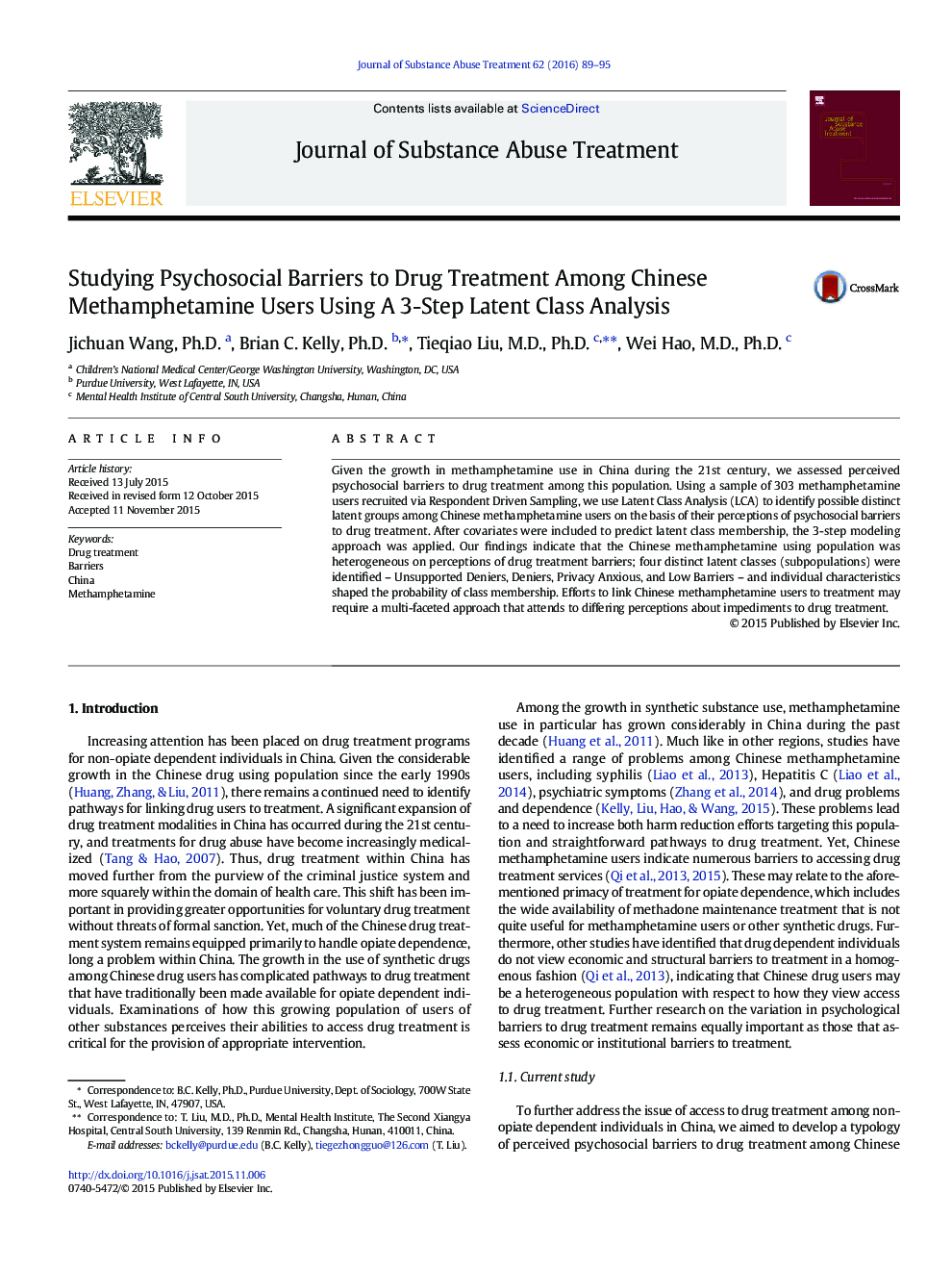| Article ID | Journal | Published Year | Pages | File Type |
|---|---|---|---|---|
| 329653 | Journal of Substance Abuse Treatment | 2016 | 7 Pages |
•Meth users in China are a heterogeneous population for perceived barriers to drug treatment.•Those most in need of treatment may be perceiving the fewest barriers.•Those with higher incomes are less likely to fall in the privacy anxious class.•Linking Chinese meth users to treatment may require a multi-faceted approach.
Given the growth in methamphetamine use in China during the 21st century, we assessed perceived psychosocial barriers to drug treatment among this population. Using a sample of 303 methamphetamine users recruited via Respondent Driven Sampling, we use Latent Class Analysis (LCA) to identify possible distinct latent groups among Chinese methamphetamine users on the basis of their perceptions of psychosocial barriers to drug treatment. After covariates were included to predict latent class membership, the 3-step modeling approach was applied. Our findings indicate that the Chinese methamphetamine using population was heterogeneous on perceptions of drug treatment barriers; four distinct latent classes (subpopulations) were identified – Unsupported Deniers, Deniers, Privacy Anxious, and Low Barriers – and individual characteristics shaped the probability of class membership. Efforts to link Chinese methamphetamine users to treatment may require a multi-faceted approach that attends to differing perceptions about impediments to drug treatment.
